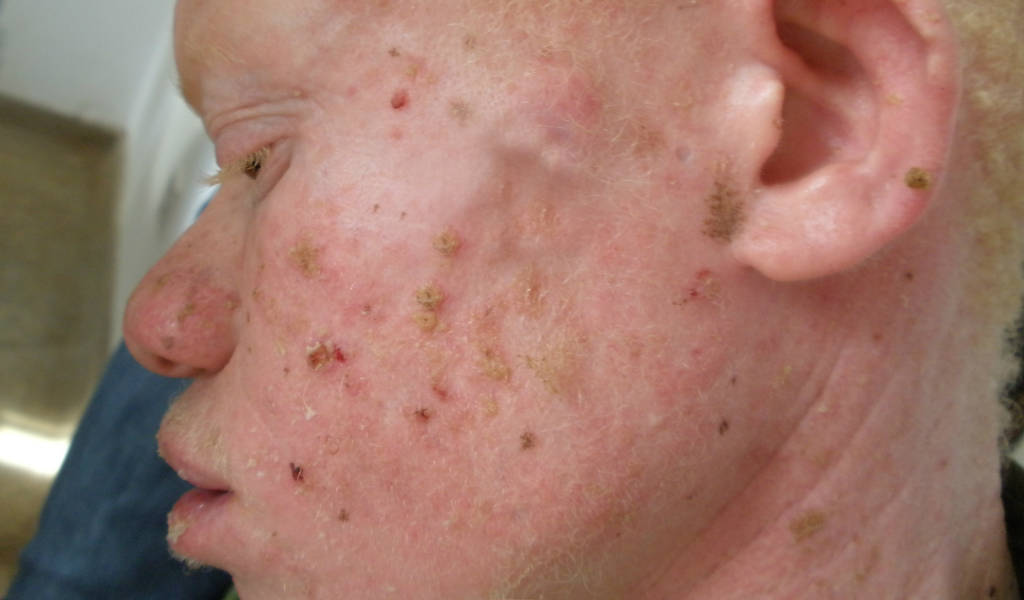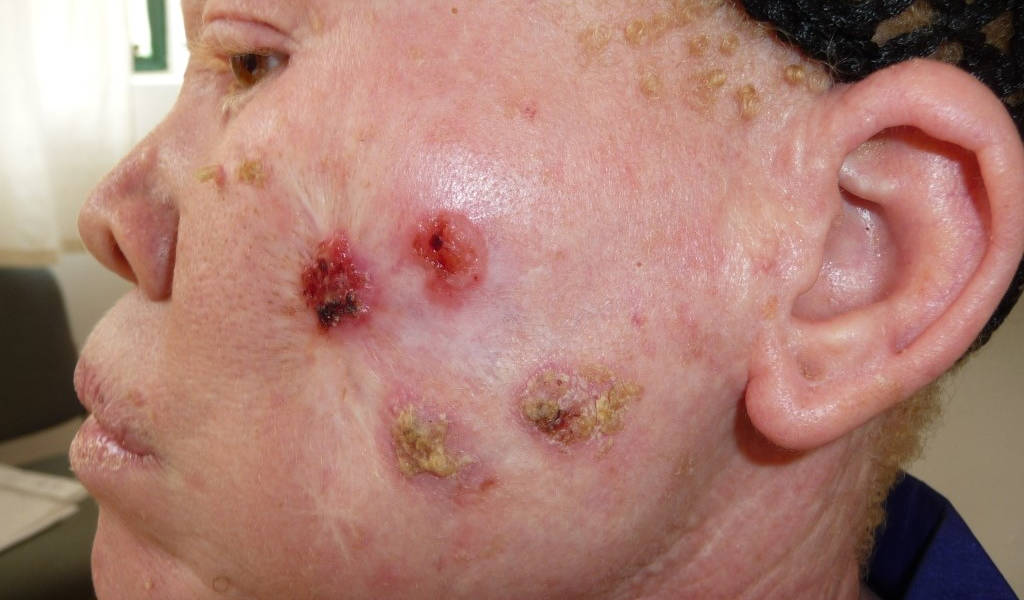In Africa, skin cancer is the leading cause of death among people with albinism, ending their lives dramatically at an early age. Prevention is essential. In Africa, sunscreen saves lives.
EVOLUTION OF SOLAR DAMAGE TO THE SKIN OF PEOPLE WITH ALBINISM
Because of genetic factors, people with albinism do not produce melanin, the natural photoprotector that protects us from ultraviolet radiation. Therefore they are extremely prone to develop skin lesions as a result of sun damaged skin.
With temperatures that often exceed 30 ° C and with jobs that mostly take place outdoors, the risk of developing skin cancer among people with albinism in Africa is extremely high. In addition, the scarce information that is offered causes a deep ignorance on the condition that, added to the generalized discrimination, make the access to health services difficult.
Skin cancer is known as the silent murderer, since the initial symptoms usually go unnoticed, leading to a late diagnosis and a worsening of the prognosis; especially among people with albinism from African contexts.




Poverty and a lack of awareness generally prevent access for people with albinism to health services, which are generally inadequate and scarce. With less than 1 dermatologist for every 3,5 million inhabitants and with poor diagnostic and treatment means, many sub-Saharan countries do not have sufficient capacity to adequately treat skin diseases. This, combined with the lack of prioritization of national health systems in the field of albinism and dermatology, has led to the current incidence of skin cancer of an epidemic nature among Africans with albinism.

